Abstract
Step-wise intrinsic resistance to ampicillin in Neisseria gonorrhoeae was analyzed genetically by DNA-mediated transformation experiments. A first-step ampicillin-resistant (Ampr1) mutant and a second-step ampicillin-resistant (Ampr2) mutant generated during sequential selection were used in these studies. Each selection step was accompanied by an approximate twofold increase in resistance. Four amp alleles were found to account for full resistance of the Ampr2 phenotype. All four amp alleles lie among a cluster of genes which code for ribosomal functions. This region has the map order rif str fus tet cam. First-step resistance was caused by two amp alleles, ampA2 and ampB1, neither of which independently caused detectable ampicillin resistance. Outcrossing of the ampA2 or the ampB1 mutation resulted in wild-type susceptibility to ampicillin. Mapping studies indicate that ampB1 lies between str and fus, whereas ampA2 lies to the right of cam. Second-step resistance required two mutations, ampC3 and ampD4, in addition to ampB1 and ampA2. Transformation of ampC3 to ampC3+ in an Ampr2 mutant resulted in the Ampr1 phenotype. Both ampC3 and ampD4 showed transformation linkage to rif and str. ampC3 was positioned at a site between rif and str. ampD4 apparently occupied a site, outside of the rif-str region, proximal to rif and distal to str. We postulate the gene order to be ampD rif ampC str ampB fus tet cam ampA.
Full text
PDF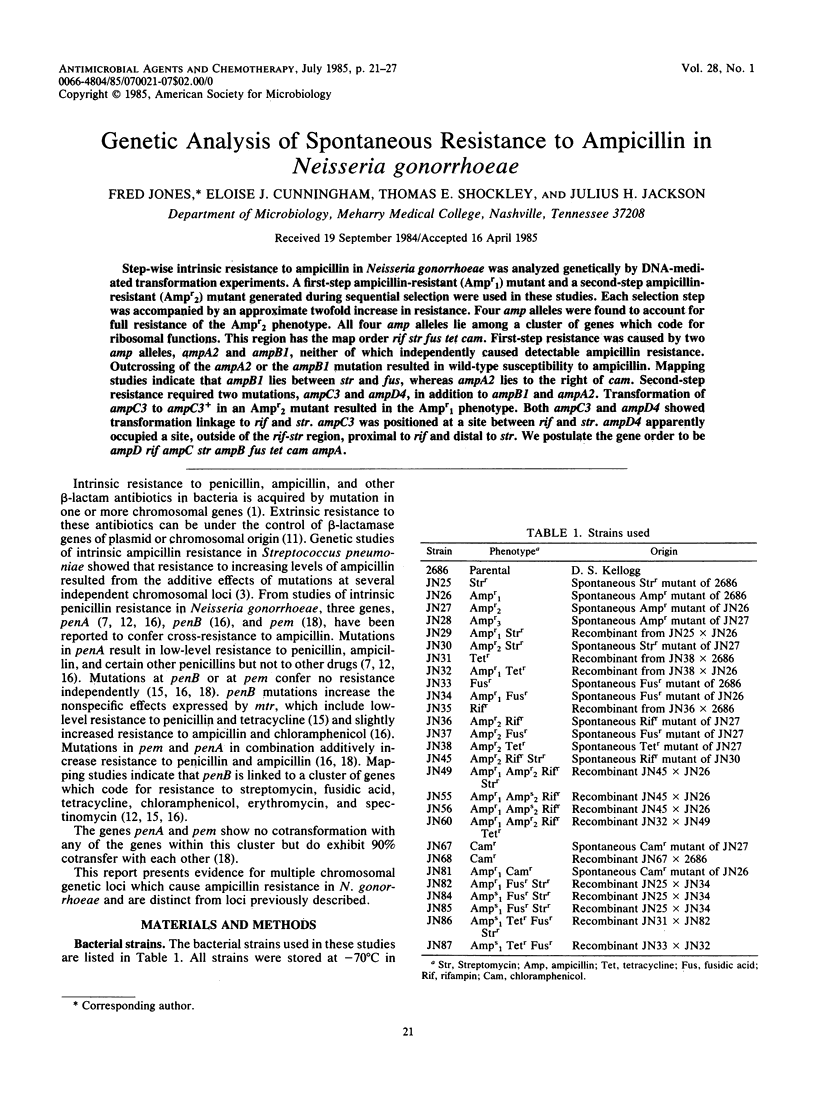
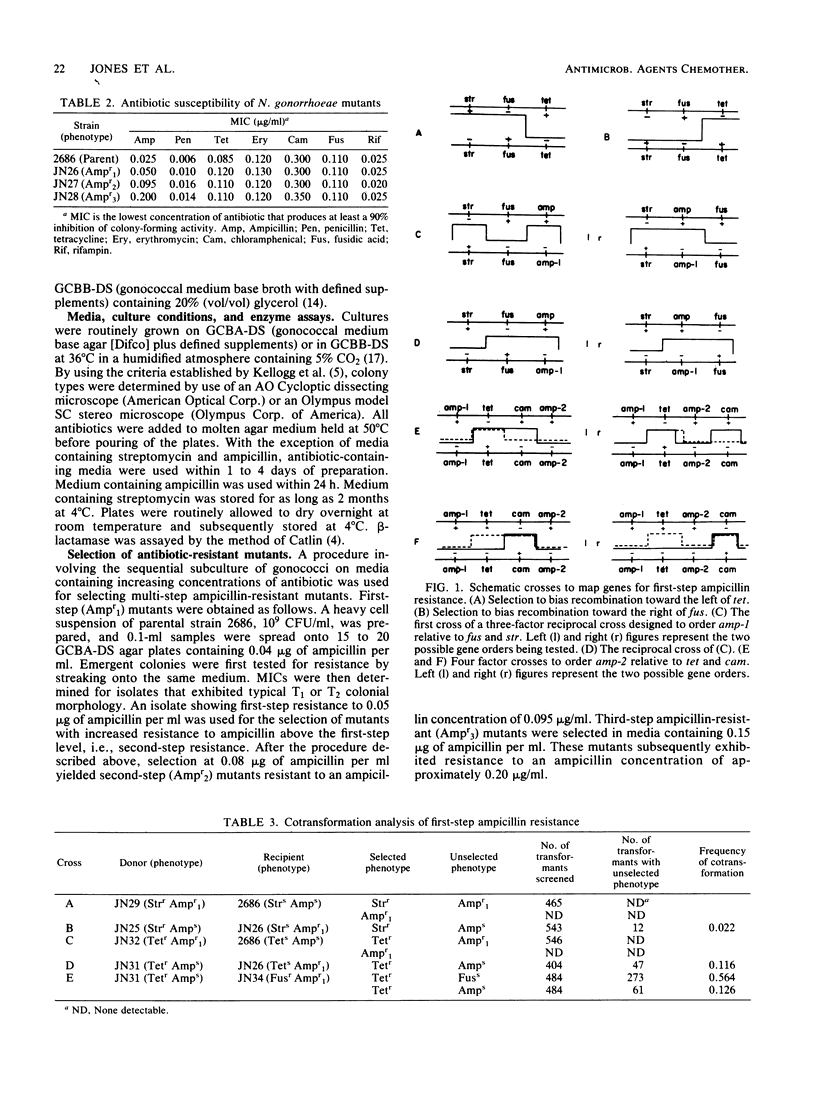
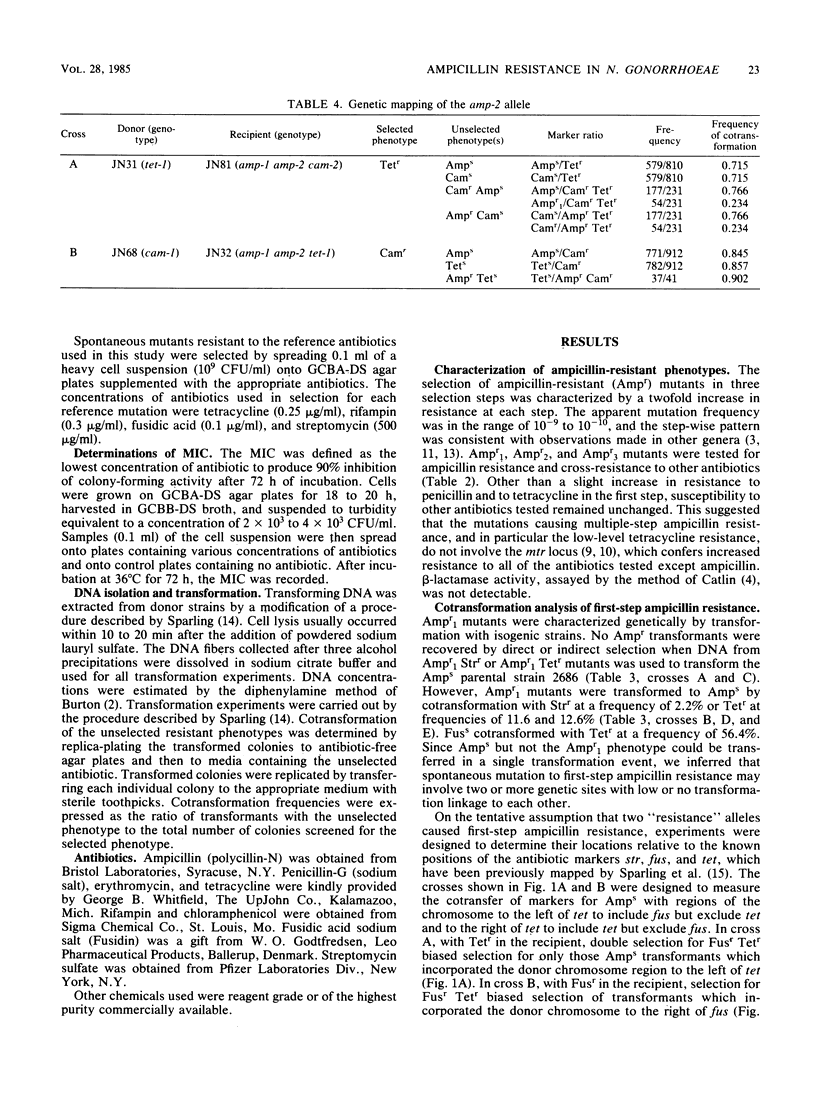
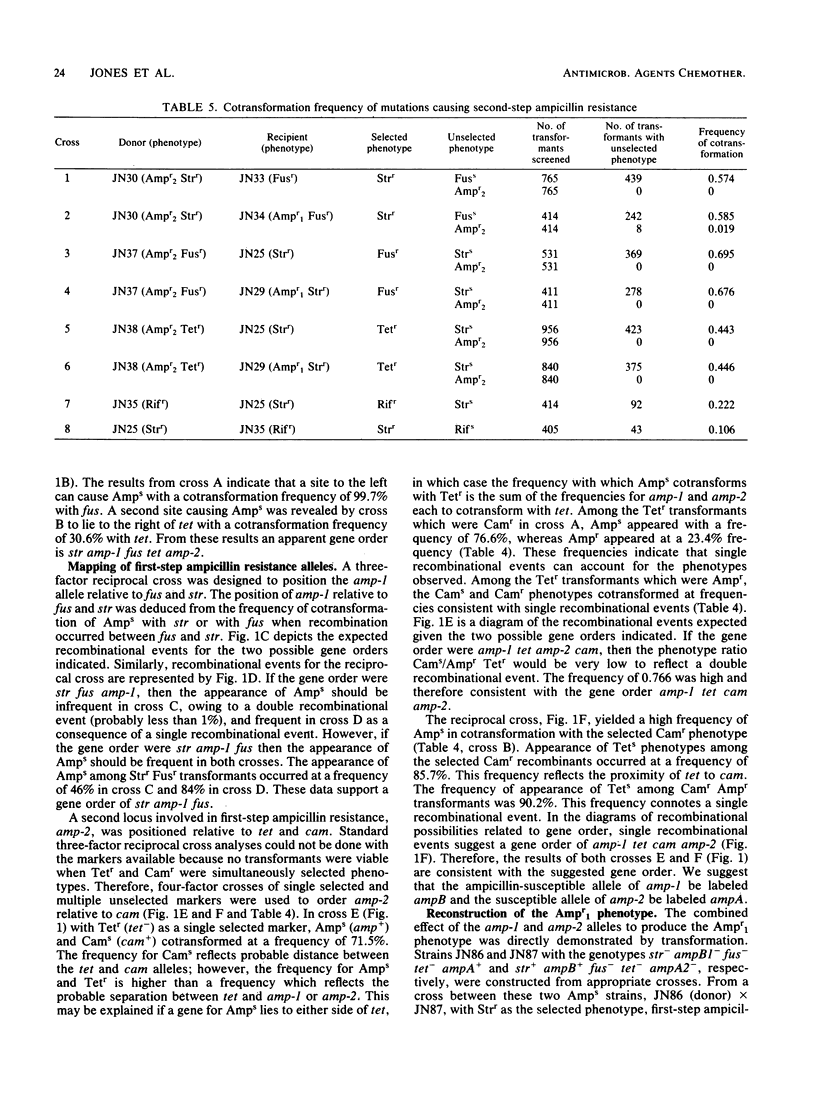
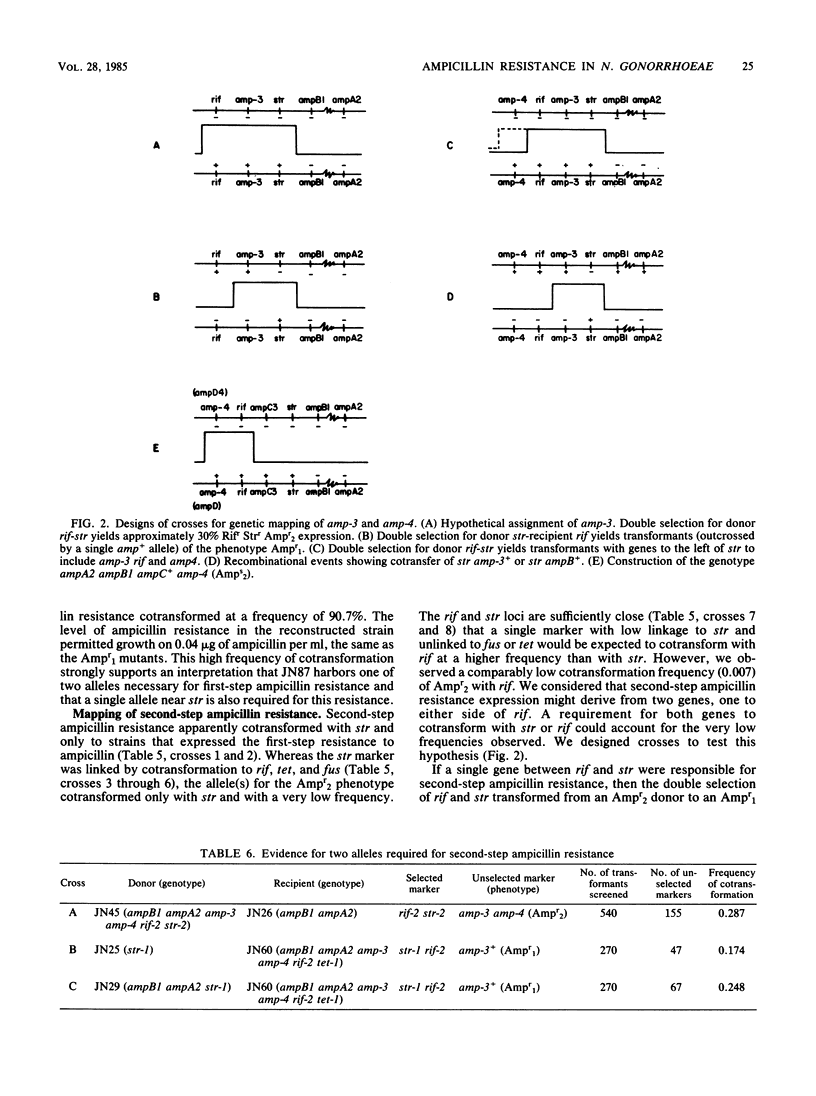
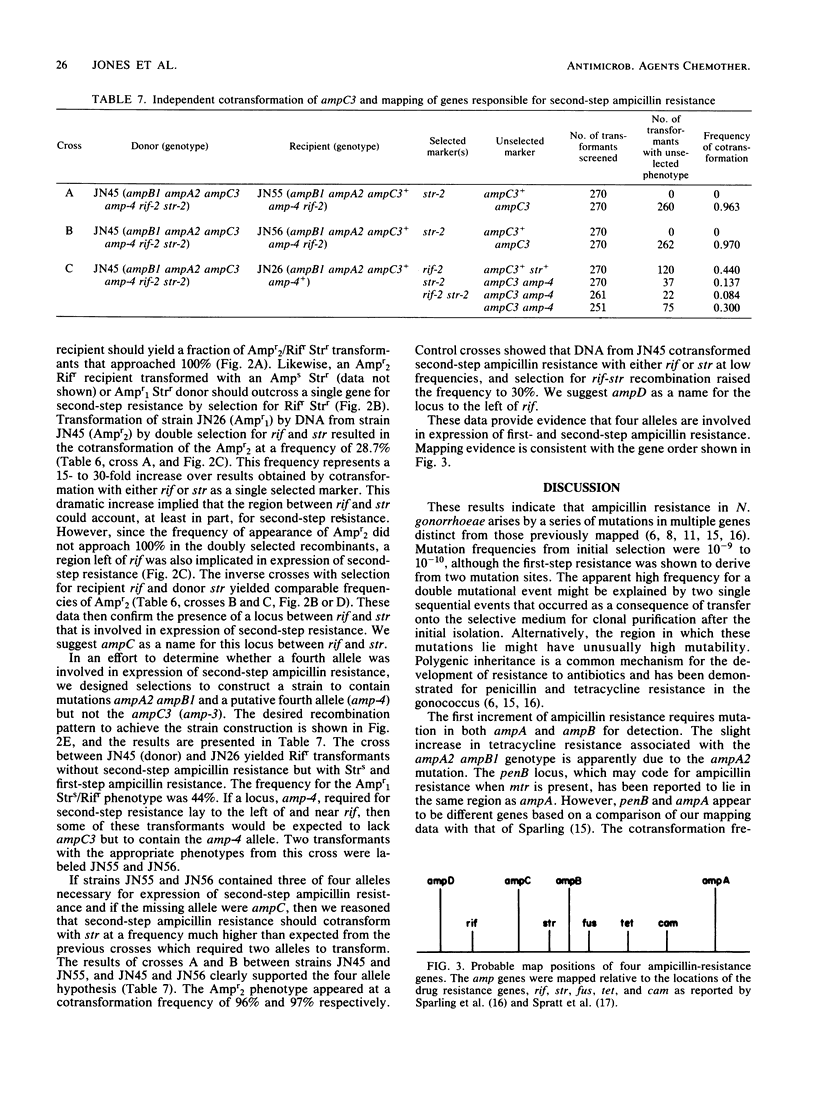
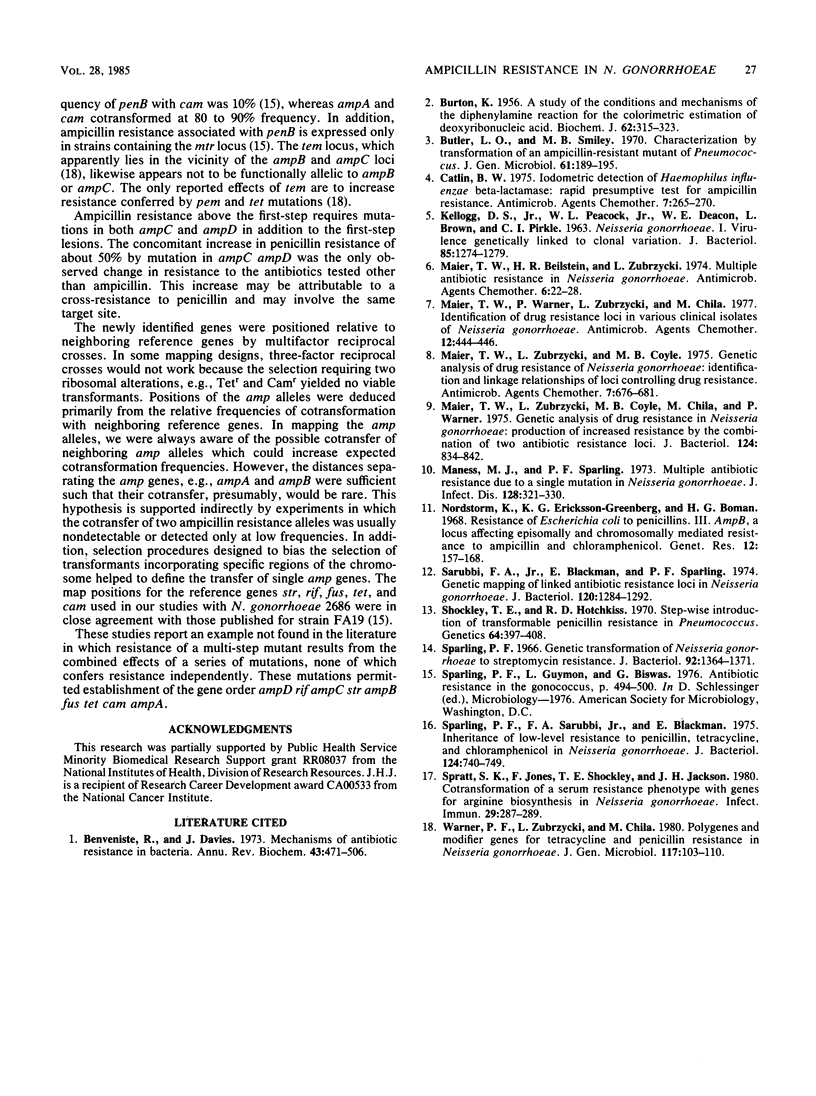
Selected References
These references are in PubMed. This may not be the complete list of references from this article.
- BURTON K. A study of the conditions and mechanism of the diphenylamine reaction for the colorimetric estimation of deoxyribonucleic acid. Biochem J. 1956 Feb;62(2):315–323. doi: 10.1042/bj0620315. [DOI] [PMC free article] [PubMed] [Google Scholar]
- Benveniste R., Davies J. Mechanisms of antibiotic resistance in bacteria. Annu Rev Biochem. 1973;42:471–506. doi: 10.1146/annurev.bi.42.070173.002351. [DOI] [PubMed] [Google Scholar]
- Butler L. O., Smiley M. B. Characterization by transformation of an ampicillin-resistant mutant of pneumococcus. J Gen Microbiol. 1970 May;61(2):189–195. doi: 10.1099/00221287-61-2-189. [DOI] [PubMed] [Google Scholar]
- Catlin B. W. Iodometric detection of Haemophilus influenzae beta-lactamase: rapid presumptive test for ampicillin resistance. Antimicrob Agents Chemother. 1975 Mar;7(3):265–270. doi: 10.1128/aac.7.3.265. [DOI] [PMC free article] [PubMed] [Google Scholar]
- KELLOGG D. S., Jr, PEACOCK W. L., Jr, DEACON W. E., BROWN L., PIRKLE D. I. NEISSERIA GONORRHOEAE. I. VIRULENCE GENETICALLY LINKED TO CLONAL VARIATION. J Bacteriol. 1963 Jun;85:1274–1279. doi: 10.1128/jb.85.6.1274-1279.1963. [DOI] [PMC free article] [PubMed] [Google Scholar]
- Maier T. W., Beilstein H. R., Zubrzycki L. Multiple antibiotic resistance in Neisseria gonorrhoeae. Antimicrob Agents Chemother. 1974 Jul;6(1):22–28. doi: 10.1128/aac.6.1.22. [DOI] [PMC free article] [PubMed] [Google Scholar]
- Maier T. W., Warner P., Zubryzycki L., Chila M. Identification of drug resistance loci in various clinical isolates of Neisseria gonorrhoeae. Antimicrob Agents Chemother. 1977 Sep;12(3):444–446. doi: 10.1128/aac.12.3.444. [DOI] [PMC free article] [PubMed] [Google Scholar]
- Maier T. W., Zubrzycki L., Coyle M. B., Chila M., Warner P. Genetic analysis of drug resistance in Neisseria gonorrhoeae: production of increased resistance by the combination of two antibiotic resistance loci. J Bacteriol. 1975 Nov;124(2):834–842. doi: 10.1128/jb.124.2.834-842.1975. [DOI] [PMC free article] [PubMed] [Google Scholar]
- Maier T. W., Zubrzycki L., Coyle M. B. Genetic analysis of drug resistance in Neisseria gonorrhoeae: identification and linkage relationships of loci controlling drug resistance. Antimicrob Agents Chemother. 1975 May;7(5):676–681. doi: 10.1128/aac.7.5.676. [DOI] [PMC free article] [PubMed] [Google Scholar]
- Maness M. J., Sparling P. F. Multiple antibiotic resistance due to a single mutation in Neisseria gonorrhoeae. J Infect Dis. 1973 Sep;128(3):321–330. doi: 10.1093/infdis/128.3.321. [DOI] [PubMed] [Google Scholar]
- Nordström K., Eriksson-Grennberg K. G., Boman H. G. Resistance of Escherichia coli to penicillins. 3. AmpB, a locus affecting episomally and chromosomally mediated resistance to ampicillin and chlorampheincol. Genet Res. 1968 Oct;12(2):157–168. doi: 10.1017/s0016672300011770. [DOI] [PubMed] [Google Scholar]
- Sarubbi F. A., Jr, Blackman E., Sparling P. F. Genetic mapping of linked antibiotic resistance loci in Neisseria gonorrhoeae. J Bacteriol. 1974 Dec;120(3):1284–1292. doi: 10.1128/jb.120.3.1284-1292.1974. [DOI] [PMC free article] [PubMed] [Google Scholar]
- Shockley T. E., Hotchkiss R. D. Stepwise introduction of transformable penicillin resistance in Pneumococcus. Genetics. 1970 Mar-Apr;64(3):397–408. [PMC free article] [PubMed] [Google Scholar]
- Sparling P. F. Genetic transformation of Neisseria gonorrhoeae to streptomycin resistance. J Bacteriol. 1966 Nov;92(5):1364–1371. doi: 10.1128/jb.92.5.1364-1371.1966. [DOI] [PMC free article] [PubMed] [Google Scholar]
- Sparling P. F., Sarubbi F. A., Jr, Blackman E. Inheritance of low-level resistance to penicillin, tetracycline, and chloramphenicol in Neisseria gonorrhoeae. J Bacteriol. 1975 Nov;124(2):740–749. doi: 10.1128/jb.124.2.740-749.1975. [DOI] [PMC free article] [PubMed] [Google Scholar]
- Spratt S. K., Jones F., Shockley T. E., Jackson J. H. Cotransformation of a serum resistance phenotype with genes for arginine biosynthesis in Neisseria gonorrhoeae. Infect Immun. 1980 Jul;29(1):287–289. doi: 10.1128/iai.29.1.287-289.1980. [DOI] [PMC free article] [PubMed] [Google Scholar]
- Warner P. F., Zubrzycki L. J., Chila M. Polygenes and modifier genes for tetracycline and penicillin resistance in Neisseria gonorrhoeae. J Gen Microbiol. 1980 Mar;117(1):103–110. doi: 10.1099/00221287-117-1-103. [DOI] [PubMed] [Google Scholar]


